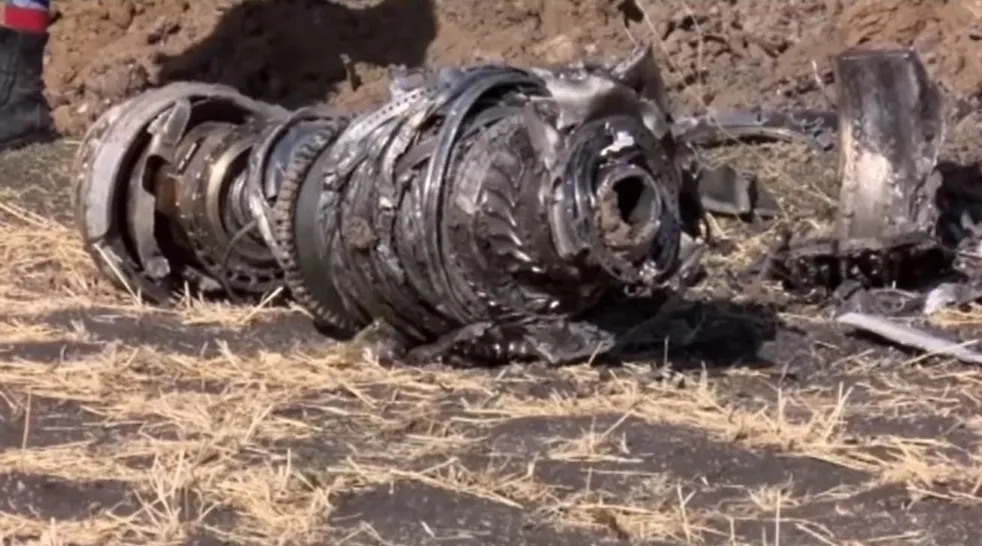
Boeing concedes MCAS involved in two fatal flights.
Apr 04, 2019

Boeing has acknowledged that its Maneuvering Characteristics Augmentation System (MCAS) played a critical role in two tragic crashes involving the 737 MAX aircraft. The system, designed to enhance the aircraft's handling characteristics, malfunctioned in both incidents, leading to the loss of 346 lives. This admission comes amid ongoing scrutiny of the company's safety practices and regulatory compliance. The acknowledgment has intensified calls for accountability and transparency, as families of the victims seek justice. Boeing's recognition of MCAS's involvement marks a significant moment in the ongoing investigation into the design and certification processes of the 737 MAX.
In recent developments, Boeing has officially acknowledged that the Maneuvering Characteristics Augmentation System (MCAS) was involved in two tragic flights that resulted in catastrophic outcomes. This revelation has significant implications for the aviation industry, safety protocols, and regulatory measures. The acknowledgment comes in the wake of extensive investigations and scrutiny surrounding the safety of the Boeing 737 MAX aircraft. Below, we explore the implications of this admission, the key factors surrounding MCAS, and how this affects stakeholders in the aviation arena.
Understanding MCAS and Its Role in Aviation
The MCAS system was designed to enhance the handling characteristics of the Boeing 737 MAX, particularly during certain flight conditions. The system is meant to prevent the aircraft from stalling by automatically adjusting the horizontal stabilizer. However, in the cases of Lion Air Flight 610 and Ethiopian Airlines Flight 302, the MCAS malfunctioned, leading to devastating crashes.
Key Factors Leading to the Acknowledgment
Several critical factors contributed to Boeing's concession regarding the MCAS system:
- Investigative Findings: Extensive investigations by aviation authorities revealed that the MCAS system played a pivotal role in both crashes.
- Regulatory Pressure: Regulatory bodies, including the Federal Aviation Administration (FAA), have demanded transparency and accountability from Boeing regarding the 737 MAX.
- Public Scrutiny: The media and public outcry over the crashes have pressured Boeing to take responsibility for the failures of the MCAS system.
Safety Implications and Industry Response
Boeing's admission has sparked a wave of reactions across the aviation industry. Airlines, regulators, and safety advocates are now faced with the challenge of ensuring that such tragedies are never repeated. The implications of this acknowledgment include:
| Stakeholder | Response |
|---|---|
| Airlines | Many airlines are reassessing their operations and training protocols to ensure that pilots are well-equipped to handle any potential MCAS-related issues. |
| Regulatory Bodies | Regulators are tightening safety standards and oversight measures, potentially leading to stricter regulations for aircraft certification. |
| Consumers | Passenger confidence may be shaken, leading to increased scrutiny of airlines' safety records and aircraft maintenance practices. |
The Road Ahead for Boeing
As Boeing moves forward, the company faces a challenging path. Key steps that Boeing must take include:
- Enhanced Training: Boeing is expected to improve pilot training programs to ensure that all pilots understand the functionality and potential issues related to the MCAS system.
- Software Updates: Ongoing software updates and improvements to the MCAS system are crucial to restore confidence in the 737 MAX aircraft.
- Transparency: Boeing must maintain transparency with stakeholders, including airlines, regulators, and the public, to rebuild trust.
Long-Term Effects on the Aviation Industry
The long-term effects of Boeing's concession regarding the MCAS system may reshape the aviation industry in several ways:
- Increased Accountability: Manufacturers may face heightened scrutiny and accountability regarding the safety of their aircraft systems.
- Focus on Safety Culture: The aviation industry may see a renewed focus on cultivating a safety culture that prioritizes proactive measures over reactive solutions.
- Innovation in Safety Technology: There may be increased investments in safety technology and systems aimed at preventing similar incidents in the future.
Conclusion
Boeing's acknowledgment of the MCAS's involvement in the two fatal flights marks a pivotal moment in aviation history. As the industry grapples with the implications of this admission, the focus must remain on safety, accountability, and the prevention of future tragedies. Stakeholders across the board must collaborate to ensure that lessons are learned and that the aviation industry continues to prioritize the safety of passengers and crew members alike.
Moving forward, Boeing's commitment to rectifying the issues surrounding the MCAS system will be critical. By implementing necessary changes and fostering a culture of transparency and safety, the aircraft manufacturer can work towards restoring confidence in its products and the overall aviation industry.
Related Articles

Explore Thailand: The Best Islands to Visit for Paradise, Adventure, and Relaxation

The Ultimate Guide to the Best Islands in Thailand for Your Next Getaway

Do babies need passports? How to get a passport for a newborn

How to get a U.S. passport fast: here’s how to expedite the process

What is Mobile Passport Control: 5 reasons why you should use it

SENTRI vs. Global Entry: A detailed guide

Do you need a passport to go to the Bahamas? Let’s find out

Do you need a passport to go to Mexico? A detailed guide

Do you need a passport to go to Canada? We got the answer

Do You Need a Passport for a Cruise: An Essential Travel Guide

Booster Seat Requirements: All the Rules to Follow in Your Rental Car

What Are the World’s Most Powerful Passports, and How Does Yours Rank?

How to Take a Passport Photo at Home: A Helpful Guide

You've got to have heart! Southwest's new livery

Your opinion: Should water be free on low cost carriers?

Young women bolder than guys as solo travellers
